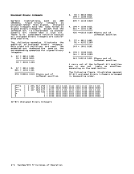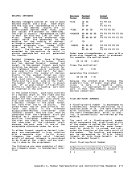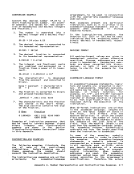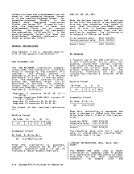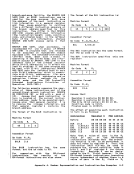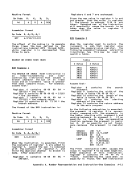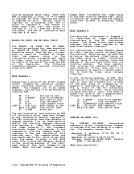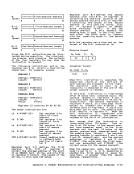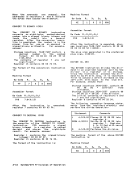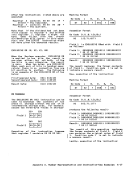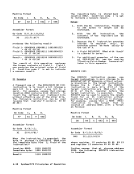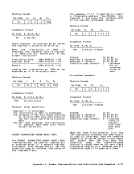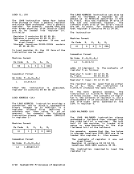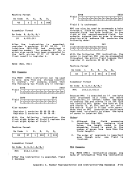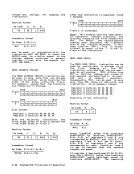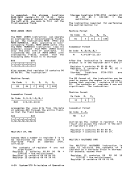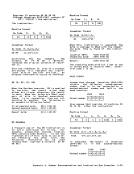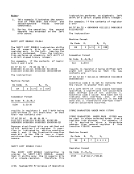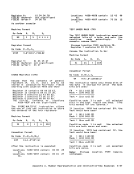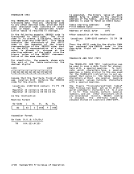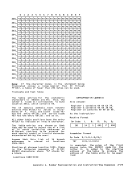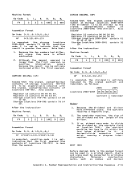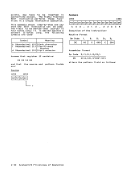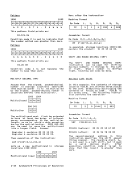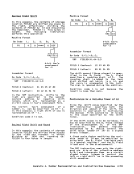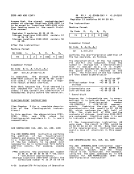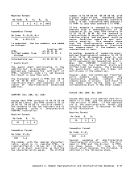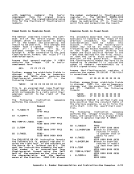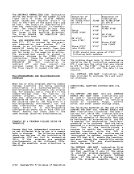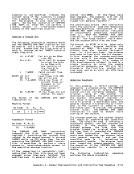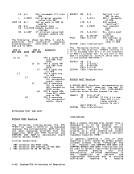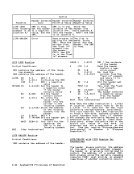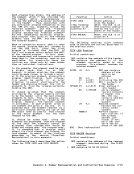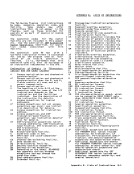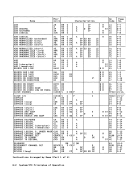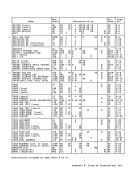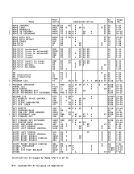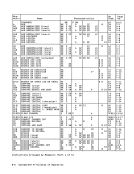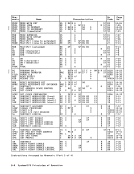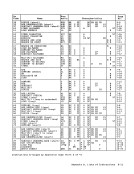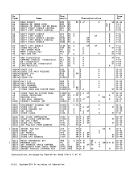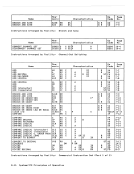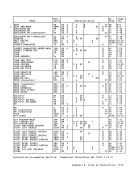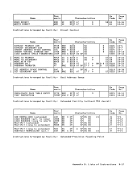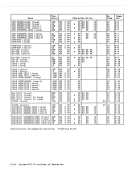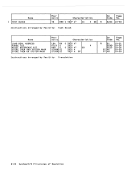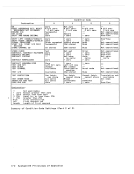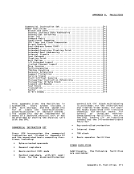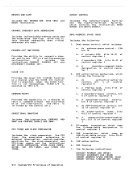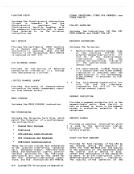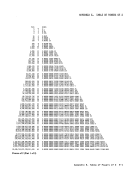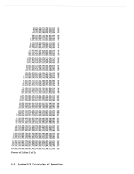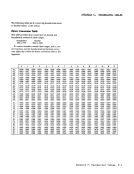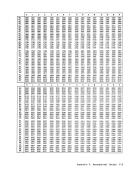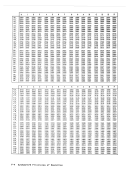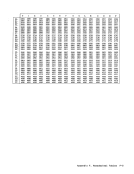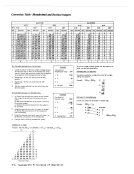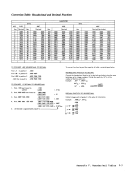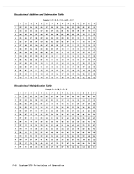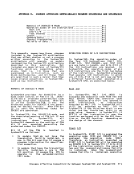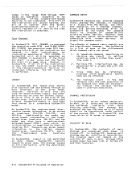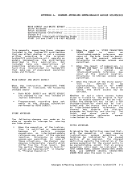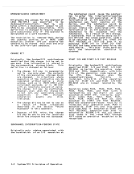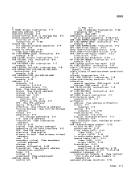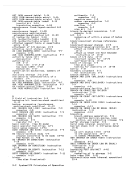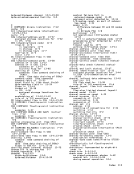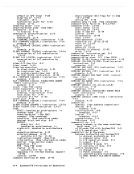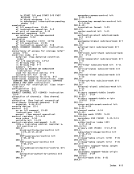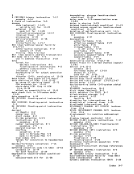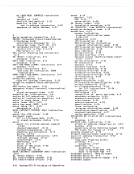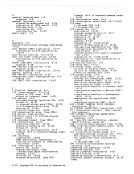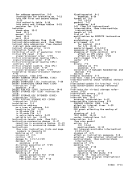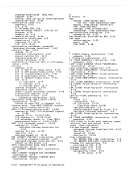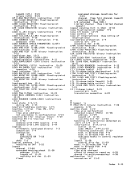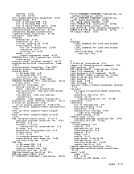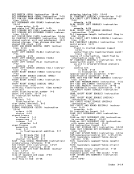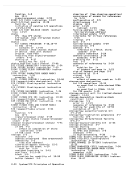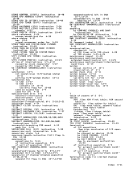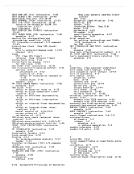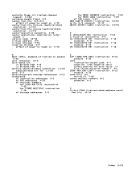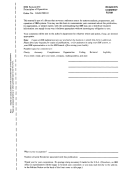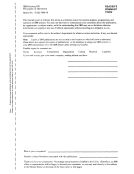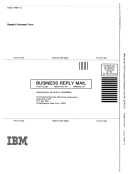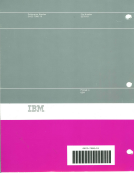operation is completed by making the
result characteristic 128 less than the
correct value, and a program inter
ruption for exponent overflow takes
place. The result sign and fraction
remain correct, and, for AXR, the char
acteristic of the low-order part remains
correct.
An exponent-underflow exception is
recognized when the characteristic of
the normalized sum wouldbe less than
zero and the fraction is not zero. If
the exponent-underflow mask bit is one,
the operation is completed by making the
result characteristic 128 greater than
the correct value. The result sign and
fraction remain correct, and a program
interruption for exponent underflow
takes place. When exponent underflow
occurs and the exponent-underflow mask
bit is zero, a program interruption does
not take place; instead, the operation
is completed by making the result a true
zero. For AXR, no exponent underflow is
recognized when the characteristic of
the low-order part would be less than
zero but the characteristic of the
high-order part is zero or greater.
The result fraction is zero when the
intermediate-sum fraction, including the
guard di gi t, is zero. Wi th a zero
result fraction, the action depends on
the setting of the significance mask
bit. If the significance mask bit is
one, no normalization occurs, the inter
mediate and final result characteristics
are the same, and a program interruption
for significance takes place. If the
significance mask bit is zero, the
program interruption does not occur;
instead, the result is made a true zero.
The R\ field for AER, AE, ADR, and AD,
and theR2 field for AER and ADR must
designate register0, 2, 4, or 6. The R1 and R2 fields for AXR must designate
register0 or 4. Otherwise, a specifi
cation exception is recognized.
ResultingCondition Code: o
1
2
3
Result fraction zero
Result less than zero
Result greater than zero
Program Exceptions:
Access (fetch, operand 2 of AE and
AD only)
Exponent overflow
Exponent underflow
Operation (if the floating-point
facility is not installed, or,
for AXR, if the extended
precision floating-point facil
ity is not installed)
Significance
Specification
1. An example of the use of the ADDNORMALIZED instruction is given in
Appendix A.
2. Interchanging the two operands in a
floating-point addition does not
affect the value of the sum.
3. The ADDNORMALIZED instruction
normalizes the sum but not the
operands. Thus, if one or both
operands are unnormalized, preci
sion may be lost during fraction
alignment.
ADDUNNORMALIZED AUR R \ , R:z [RR, Short Operands] , 3 E' I R\ I R2 0 8 12 15
AURt,D:z(X:z,B:z) [RX, Short Operands]
'7 E'I Rt I X 2 I B2 I O 2 0 8 12 16 20 31
AWR [RR, Long Operands]
o 8 12 15
AW [RX, Long Operands]
'6 E'
o 8 12 1620 31
The second operand is added to the first
operand, and the unnormalized sum is
placed at the first-operand location.
The execution
identical to
except that:
of ADD
that ofUNNORMALIZED is
ADDNORMALIZED, 1. When no carry is present after th~ addition, the intermediate-sum
fraction is truncated to the proper
result-fraction length without a
left shift to eliminate leading
hexadecimal zeros and without the
corresponding reduction of the
characteristic.
2. Exponent underflow cannot occur.Chapter 9. Floating-Point Instructions 9-7
result characteristic 128 less than the
correct value, and a program inter
ruption for exponent overflow takes
place. The result sign and fraction
remain correct, and, for AXR, the char
acteristic of the low-order part remains
correct.
An exponent-underflow exception is
recognized when the characteristic of
the normalized sum would
zero and the fraction is not zero. If
the exponent-underflow mask bit is one,
the operation is completed by making the
result characteristic 128 greater than
the correct value. The result sign and
fraction remain correct, and a program
interruption for exponent underflow
takes place. When exponent underflow
occurs and the exponent-underflow mask
bit is zero, a program interruption does
not take place; instead, the operation
is completed by making the result a true
zero. For AXR, no exponent underflow is
recognized when the characteristic of
the low-order part would be less than
zero but the characteristic of the
high-order part is zero or greater.
The result fraction is zero when the
intermediate-sum fraction, including the
guard di gi t, is zero. Wi th a zero
result fraction, the action depends on
the setting of the significance mask
bit. If the significance mask bit is
one, no normalization occurs, the inter
mediate and final result characteristics
are the same, and a program interruption
for significance takes place. If the
significance mask bit is zero, the
program interruption does not occur;
instead, the result is made a true zero.
The R\ field for AER, AE, ADR, and AD,
and the
designate register
register
cation exception is recognized.
Resulting
1
2
3
Result fraction zero
Result less than zero
Result greater than zero
Program Exceptions:
Access (fetch, operand 2 of AE and
AD only)
Exponent overflow
Exponent underflow
Operation (if the floating-point
facility is not installed, or,
for AXR, if the extended
precision floating-point facil
ity is not installed)
Significance
Specification
1. An example of the use of the ADD
Appendix A.
2. Interchanging the two operands in a
floating-point addition does not
affect the value of the sum.
3. The ADD
normalizes the sum but not the
operands. Thus, if one or both
operands are unnormalized, preci
sion may be lost during fraction
alignment.
ADD
AU
'7 E'
AWR [RR, Long Operands]
o 8 12 15
AW [RX, Long Operands]
'6 E'
o 8 12 16
The second operand is added to the first
operand, and the unnormalized sum is
placed at the first-operand location.
The execution
identical to
except that:
of ADD
that of
ADD
fraction is truncated to the proper
result-fraction length without a
left shift to eliminate leading
hexadecimal zeros and without the
corresponding reduction of the
characteristic.
2. Exponent underflow cannot occur.
























































































































































































































































































































































































































































